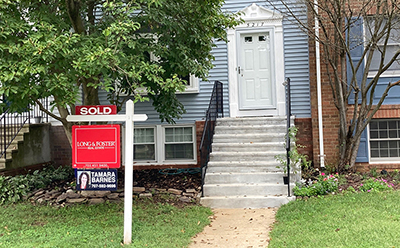
Existing Home Sales Down 7th Straight Month

Existing home sales fell in August for the seventh straight month, the National Association of Realtors reported Wednesday, despite more borrowers locking in rates before they went up.
NAR said existing home sale (https://www.nar.realtor/existing-home-sales) fell by 0.4% from July to a seasonally adjusted annual rate of 4.80 million. Year-over-year, sales fell by 19.9% (5.99 million).
Single-family home sales fell to a seasonally adjusted annual rate of 4.28 million in August, down 0.9% from 4.32 million in July and down 19.2% from a year ago. The median existing single-family home price rose to $396,300 in August, up 7.6% from a year ago. Existing condominium and co-op sales rose to a seasonally adjusted annual rate of 520,000 units in August, up 4.0% from July but down 24.6% from one year ago. The median existing condo price rose $333,700 in August, an annual increase of 7.8%.
Regionally, results were mixed. In the South sales were unchanged from July at an annual rate of 2,130,000 in August, but down 19.3% from one year ago. The median price in the South rose $356,000, an increase of 12.4% from a year ago. Sales in the West rose by 1.1% from July to an annual rate of 880,000 but fell by 29.0% from a year ago. The median price in the West rose to $602,900, a 7.1% increase from a year ago.
Sales in the Northeast rose by 1.6% from July to an annual rate of 630,000 in August, but fell by 13.7% from a year ago. The median price in the Northeast rose to $413,200, an increase of 1.5% from the previous year. Sales in the Midwest fell by 3.3% from July to an annual rate of 1,160,000 in August and fell by 15.9% from a year ago. The median price in the Midwest rose to $287,900, up 6.6% from the previous year.
Charlie Dougherty, Economist with Wells Fargo Economics, Charlotte, N.C., noted despite the drop, August sales actually beat expectations for a 2.3% drop. “The better-than-expected outcome was likely owed to buyers jumping at the chance to lock in slightly lower mortgage rates,” he said.
However, Dougherty said elevated mortgage rates and increased economic uncertainty appear to be holding back both home buying and selling; after increasing in each of the past five months, total housing inventory declined 1.5% to 1.28 million during August, a level that is unchanged compared to the same month last year.
“Sellers, the vast majority of whom hold a mortgage with a rate under 5%, do not appear enthusiastic about trading to a new mortgage with a higher rate,” Dougherty said. “This phenomenon is likely to keep inventories low and be supportive of home prices for the foreseeable future.”
“The housing sector is the most sensitive to and experiences the most immediate impacts from the Federal Reserve’s interest rate policy changes,” said NAR Chief Economist Lawrence Yun. “The softness in home sales reflects this year’s escalating mortgage rates. Nonetheless, homeowners are doing well with near nonexistent distressed property sales and home prices still higher than a year ago.”
NAR said total housing inventory at the end of August fell to 1,280,000 units, a decrease of 1.5% from July and unchanged from the previous year. Unsold inventory sits at a 3.2-month supply at the current sales pace – identical to July and up from 2.6 months in August 2021.
“Inventory will remain tight in the coming months and even for the next couple of years,” Yun said. “Some homeowners are unwilling to trade up or trade down after locking in historically-low mortgage rates in recent years, increasing the need for more new-home construction to boost supply.”
The report said the median existing-home price for all housing types in August rose to $389,500, a 7.7% jump from a year ago ($361,500), as prices rose in all regions. This marks 126 consecutive months of year-over-year increases, the longest-running streak on record. However, it was the second month in a row that the median sales price retracted after reaching a record-high $413,800 in June, the usual seasonal trend of prices declining after peaking in the early summer.
The report said properties typically remained on the market for 16 days in August, up from 14 days in July but down from 17 days a year ago. Eighty-one percent of homes sold in August were on the market for less than a month.
First-time buyers were responsible for 29% of sales in August, unchanged from July and a year ago. All-cash sales accounted for 24% of transactions in August, the same share as in July, but up from 22% in August 2021. Individual investors or second-home buyers purchased 16% of homes in August, up from 14% in July and 15% a year ago.
Distressed sales represented 1% of sales in August, essentially unchanged over the past month and past year.
